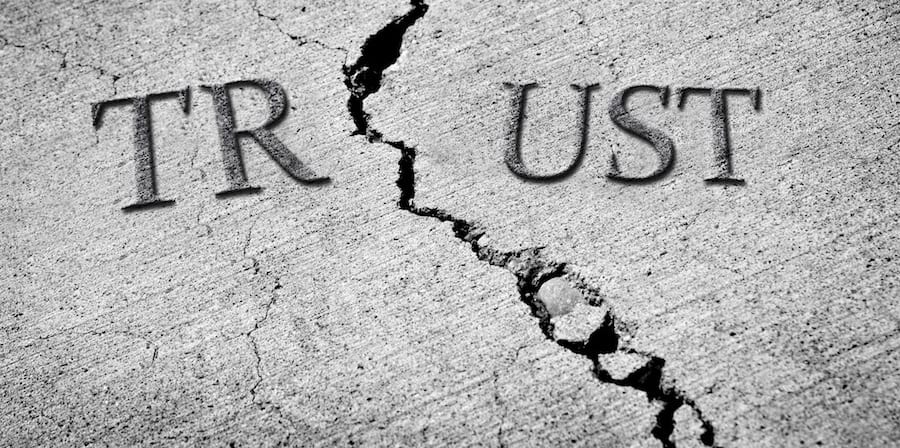
Why lean marketing is the future
FEATURE – No organization can expect to survive without a sound marketing strategy. The author outlines the main elements and advantages of a lean marketing approach.
Words: Alessandro Martemucci, Lean Coach, Istituto Lean Management – Italy.
Covid-19 has pushed the global economy closer to the VUCA scenario (Volatility, Uncertainty, Complexity, Ambiguity) than it’s been in decades. In today’s market, change is continuous and competition is fierce. We are experiencing, albeit under different circumstances, the same dynamic that Japan lived through after World War 2. That crisis was one of the elements leading to the development of Toyota’s unique approach to management, which in turn led to Lean Thinking. Indeed, crises have always been fertile ground for change and innovation. With this in mind, it’s hard to imagine a lean organization that is not interested in deepening its transformation in the current scenario of uncertainty and unsustainable costs.
In just a few weeks, companies have found themselves in front of a choice – being the predators or being the prey. Which way a business goes depends on two elements: the management’s ability to change and adapt the business strategy, revolutionize methods and processes and stick to the company’s True North; and the resilience and drive to create new market opportunities rapidly and cheaply.
The role of marketing is to help organizations to adapt their decisions and actions to the constant changes taking place in the market. Yet, marketing needs some re-setting of its own if it is to truly support businesses in becoming stronger and thriving in situations of extreme instability. A lean approach to sales and marketing enables organizations to shake up the competitive landscape by reinventing themselves in a very short time and fully leveraging the opportunities afforded to them by digital technology. Lean represents a revolution in marketing, its own “new deal”.
BEYOND MODERN MARKETING
Lean marketing represents the next step in the evolution of modern marketing, striving for excellence at a low cost – “doing more with less”. Applying it means to drastically reduce time and cost, optimize the use of resources, eliminate waste in its every form, focusing on boosting the company’s ability to respond quickly to market developments and on creating value for customers at all times.
John Wanamaker, considered to have been a pioneer in marketing, once said: “Half the money I spend on advertising is wasted; the trouble is, I don't know which half.” Not anymore (at least not necessarily): innovative digital tools now allow companies to use their resources much more efficiently and effectively than before – no wonder such tactics, which are capable of targeting specific demographics, are referred to as “precision marketing”. Yet, waste is still rampant in marketing.
In the context of strategic marketing (which ultimately contributes to the positioning of a company in its sector), rather than just operational marketing, waste can refer to several issues or bad practices:
- long and fruitless communication campaigns;
- ineffective and poorly planned marketing strategies;
- lack of specific and adequate KPIs;
- delays in responding to customer queries;
- prices that are not aligned with the market;
- lack of understanding of the customer journey;
- a sales takt time that is not aligned with demand;
- unhappy customers;
- incorrect allocation of resources and marketing budget;
- frequents errors in communication;
- wrong positioning of a product in the market;
- sales strategies that were planned long before they need to be executed;
- and a terrible customer experience before and after the sale.
Lean marketing helps us to identify and address these deficiencies, thus boosting a company’s performance. A lean marketing model maximizes value for customers while using the least possible amount of resources, anticipating and trying to meet price and quality expectations, improving sales and, most importantly, putting people at the heart of the work.
This approach entails analyzing and optimizing marketing processes and work flow, by first looking at two key elements: the customer journey and the customer experience (CX or user experience, UX). From operational marketing to new product development, from lead generation tocustomer queries, from managing information to managing orders, lean marketing encourages us to rethink our entire modus operandi with the aim of giving customers what they want as quickly as possible, at the right price, engaging all stakeholders in the value chain. A better customer experience makes for loyal customers, reducing retention costs and eliminating churn rate. This, in turn, encourages positive conversations on the brand and turns customers into ambassadors. Ultimately, it improves the KPIs.
The beauty of lean marketing is that it is completely adaptable to any context, from private businesses to public setting (like government agencies or healthcare). In this case, the citizen or the patient become the customers.

CLIENT FOCUS
The focus of lean marketing is not on internal processes (which remain critical to provide customers with the product or service they want, at the cost they want and when they want it), but on external processes – like delivery, sales, communication and after-sales. In lean marketing, we start with an analysis of how the customer purchases and consumes our product (looking at the customer journey and the user experience and at the waste present in them). Only then do we figure out how to best enable that customer experience with our internal processes and begin to think about further digitizing and innovating that experience. At every “touch point” there is an exchange of information, data and sensations, and it’s important to look at these with customer value in mind at all times (this can mean specific training for salespeople or an analysis of customer behavior through observation inside a shop or in online store using head maps).
It’s important to point out, however, that seeing waste, problems and inefficiency in marketing is harder than it is, for example, in a manufacturing plant. They are intangible, unlike a defective part. Despite this clear difference, however, using lean in marketing is remarkably similar to using it in a factory: it starts with an initial check-up and the drawing of a value stream map for sales (the customer journey), followed by the identification of KPIs (orders, sales, improvement ideas, kaizens, financial results, etc) and the work to improve them. Finally, results are sustained and further improved upon by diligently tracking indicators and applying PDCA.

Here’s an example of inefficiency in the marketing world. Imagine a client contacting a company through one of its distribution channels (a store, web store, event, etc). Products and services are showcased to allow her to make her choice – all value-adding activities that make the customer aware of the company’s offering. Now imagine the customer requesting a quote and that quote to take one week to reach her. After that, the customer will evaluate the offer for a couple more days before finally placing an order – which will take another week to handle. From that moment, it takes one more week for the product to be delivered to the customer. This way almost one month went by from the moment the customer first got in touch to the moment she received her product. Waiting is a source of stress for clients, and in this day and age most people won’t tolerate such a long, cumbersome process. But why did it take so long? For the waste hidden in the marketing and sales processes of the company. This is the sort of thing we need to tackle with our lean marketing efforts.
THE 5P IN LEAN MARKETING
Lean marketing goes past the 4Ps in Kotler’s marketing model, adding a fifth P – which stands for Problem. I believe this is lean’s great contribution to marketing.
The 5Ps correspond to the five objectives that all innovative companies (or global disruptors) need to achieve.
- This is a strategic P that aims to provide value by solving a customer problem or meeting a customer need.
- This P encourages us to look at our internal processes from the point of view of the customer, which also means to actively listen to define the product price.
- Promotion and distribution. In this phase, we focus on ensuring the product (or value) flows uninterrupted and quickly to the customer, where and when they want it.
- Augmented product, which facilitates the interaction between the business and the customer after the sale, giving the former control on the product thanks to digital tools (like the updates sent to our smartphones.
- Personalization. This meant to transform the most complex and potentially frustrating customer experiences into delightful moments that take our company one step closer to excellence.

Beyond this, it’s important to remember that a lean marketing strategy rests on two key elements: waste reduction and customer value. To help you build your marketing strategy quickly and easily, in an A3 format, I have created a tool called Lean Marketing Canvas. More on this in a future article.
THE AUTHOR

Read more


OPINION – The team at Instituto Lean Management in Barcelona comments on recent news from the Catalan healthcare sector and reflects on lean sustainability.


INTERVIEW – Software development company Theodo is a unique example of a digital company that has fully embraced lean and understood its potential. We caught up with their young CEO and CTO.


INTERVIEW – The CIO of a French pharmaceutical company gives us a sneak peek of her presentation at the upcoming Lean IT Summit, focused on using the obeya to change the IT department.


FEATURE – In this interesting piece, the author explains why living up to the ideal of mutual trust is hard, and how lean tools can help us build a workplace based on respect.

